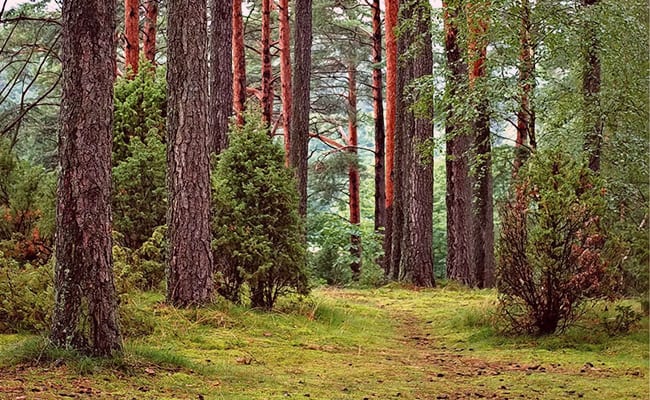In nature, the biological concept of interspecies relationships has always been given. Currently the best known are symbiotic relationships, in which we see how a species or organismor it is attached to another that can generally be larger. When that happens, both organizations benefit in one or more ways from the relationship they have.
The best known example so far of the symbiosis is the relationship between the rhinoceros and the buffalo bird, in which the bird obtains food for itself by removing the insects from the rhinoceros, while the older obtains the act of getting rid of it. to those insects and find himself groomed by the buffalo. However, not all interspecies relationships are this good. We will discover in this post a slightly less healthy power relationship: amensalism.
What is amensalism?
Amensalism is a part of biology, which occurs mainly in the relationship between plants. It is known as the relationship between two biological species in which one of the two organisms is harmed by that relationship, and the other organism involved does not feel any change, that is, that the relationship with the injured organism is actually neutral. In other words, Amensalism occurs when a weaker or smaller species enters a relationship in which it is harmed by a larger and / or stronger species, and instead the dominant species does not even accuse the existence of the larger species.
To address this issue correctly it is important to know that there are many different types of interspecies relationships, in which depending on their diet, size and other types of characteristics, a harmful or neutral relationship can occur between them. Amensalism in itself is not bad for some of the organisms, but this interaction represents at the same time the predation of each one of them as part of the life cycle.
Amensalism in microorganisms
One of the most common examples when it comes to amensalism is that of antibiotics. Some are produced by living organisms; either by bacteria, fungi or spores. Others are synthetic in nature, either in part or in full. In other words, they are artificially created. Penicillin is one of the best known antibiotics.
The relationship between an antibiotic and an infectious organism is called antibiosis, and it is the type of relationship that occurs when one of the organisms is damaged or killed by the action of the other. Amensalism, also called antagonism, it is a negative relationship in which in the "micro" environment one of the organisms creates conditions that are intolerable for the other population; That is why antibiosis is a form of amensalism, since the antibiotic generates conditions that the virus cannot tolerate, which is why it ends up dying.
Amensalism in the environment
In the environment there is a "competition" relationship between the vast majority of species. Many of us are familiar with the philosophy of hunting or being hunted that is the one that prevails in the jungle. Every existing organism He must carry out a fight for survival in the scenario that corresponds to his habitat. In this way, this competition can occur in places as large as the ocean itself, or in places as small as a puddle after the rain.
The antagonism can lead to the location of a habitat when an organism has already established itself in it, which can cause the place to have unstable and intolerable conditions for the rest of the life that it may try to establish itself there.
In some forests, such as those in the Amazon rainforest, the larger trees receive all the sunlight, and therefore the smaller ones are left behind. relegated to receive what may come to them, and in cases where sunlight is not allowed, since the largest tree takes it in completely, they have no choice but to die from its lack.
How is it done?
The way antagonism works is generally by the generation of toxic substances that prevent other populations from emerging while they are around them. These substances are generally produced by microorganisms.
When an organism establishes itself in a place, his survival instinct dictates that he must do everything possible so that other species cannot be there, cannot tolerate space or cannot live within it. This is not classified as a positive relationship for the organism itself, but rather a neutral relationship for itself, but harmful for the rest of the species.
Antagonism and competition
It may be the fact that people confuse antagonism with another relationship that proliferates in nature that is that of "competition", which is the one that exerts the struggle between two or more organisms in order to obtain resources, be it water, food or space anywhere they can settle.
However, while the competition is a power game to delimit a territory that is beneficial to the winner; in antagonism, the one who carries out the delimiting action does not receive any kind of real advantage.
Some examples of amensalism
- When animals trample the herbs in a place without taking advantage of them, this causes that the other animals cannot consume these herbs.
- One of the best known examples is that of the redwoods, which when growing do not allow sunlight to pass under their branches, so generally there will be no plants or shrubs growing around them due to the absence of light.
- When, due to some natural imbalance, the population of algae increases, an increase in the toxicity of said population can be generated, causing the animals to become intoxicated if they consume them, or the fish and organisms that circulate around them are harmed by their toxicity.
- A wasp that lays its eggs in aphids creates a situation of amensalism, since when the young of the wasp are born they will feed on the aphid.
- Pine leaves that fall to the ground generate a toxic compound that inhibits seed germination where they fall.
- Eucalyptus secretes a substance that prevents and hinders the development of other plants around it.
The human being
This main antagonist requires his own place on the ladder since he is the one that causes the most damage globally. Humans cause a lot of harm to wildlife, just for fun or for no benefit. Taking wildlife animals as pets, or generating the destruction of their environment, causing other species to not exist in it by dirtying their lakes and forests, which does not provide any benefit to human beings. This is an anthropometric intervention that harms the other species from which the human being does not obtain any benefit.
Consequences and importance
When symbiotic relationships normally occur, both organisms that carry them out benefit in some way from the relationship. In the competitive relationship, only one of the organizations is benefited after the fight for some resource or territory. While in the relationship of amensalism, the only thing that is achieved is that one of the organisms is highly damaged. It may be due to anthropometric intervention, or between species any of the other kingdoms, while the other organism basically does not even accuse the existence of the previous one.
In these cases, one of the possible consequences is the reduction and disappearance of species due to not being able to find a place to settle. Ultimately, instead of being considered a useful relationship, amensalism or antagonism is a biological relationship that is not beneficial to any species.

